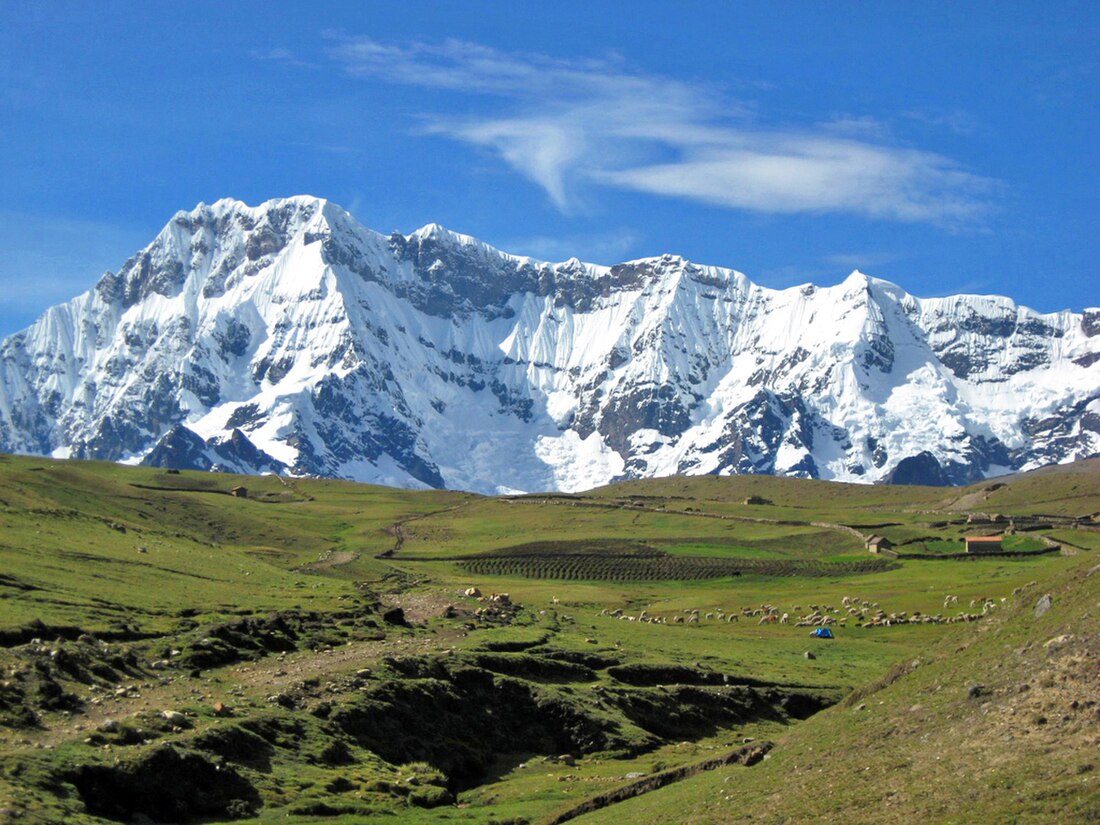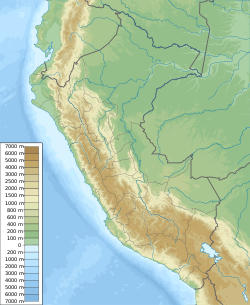Top Qs
Timeline
Chat
Perspective
Ausangate
Mountain in the Andes of Peru From Wikipedia, the free encyclopedia
Remove ads
Ausangate or Auzangate[1] (in Hispanicized spellings) is a mountain of the Vilcanota mountain range in the Andes of Peru. With an elevation of 6,384 metres, it is situated around 100 kilometres southeast of Cusco in the Cusco Region, Canchis Province, Pitumarca District, and in the Quispicanchi Province, Ocongate District.[1]
This article needs additional citations for verification. (August 2022) |


The mountain has significance in Incan mythology.
Every year the Quyllur Rit'i (Quechua for "star snow") festival which attracts thousands of Quechua pilgrims is celebrated about 20 km north of the Ausangate at the mountain Qullqipunku. It takes place one week before the Corpus Christi feast.
The region is inhabited by llama and alpaca herding communities, and constitutes one of the few remaining pastoralist societies in the world. High mountain trails are used by these herders to trade with agricultural communities at lower elevations. Currently, one of these trails, "the road of the Apu Ausangate", is one of the most renowned treks in Peru.
The area has four major geological features, the Andean uplift formed by Granits, the hanging glaciers and glacial erosional valleys, the Permian formation with its singular colors: red, ochre, and turquoise and the Cretaceous, limestone forests.
Remove ads
Archaeological sites on the Ausangate and Vinicunca Route
- Colonial Bridge of Checacupe
- Colonial Temple of Checacupe
- Siwinaqocha
- Laguna Ausangate
- Ananiso Canyon
- Rock Climbing - Huayllasqa
- Uchullucllo Thermal Baths
Climbing activity
The north face of Ausangate was first climbed in 2023 by Japanese climbers Yudai Suzuki and Kei Narita. That face is able to see easily from the last small village Pacchanta. The normal route is located at opposite side (south face) of the mountain; however, only 0 to 4 teams successfully climb that route each year.
The legend of the Ausangate Mountain
Protagonist of legends told through generations since the Inca Empire, the nevado is still venerated as a divinity (called Apu (god)) by the inhabitants of its surroundings.[2]
Gallery
- Handicraft seller in Ausangate, near Jampa Pass
- Women of Ausangate, near Tinki village
See also
References
Wikiwand - on
Seamless Wikipedia browsing. On steroids.
Remove ads




